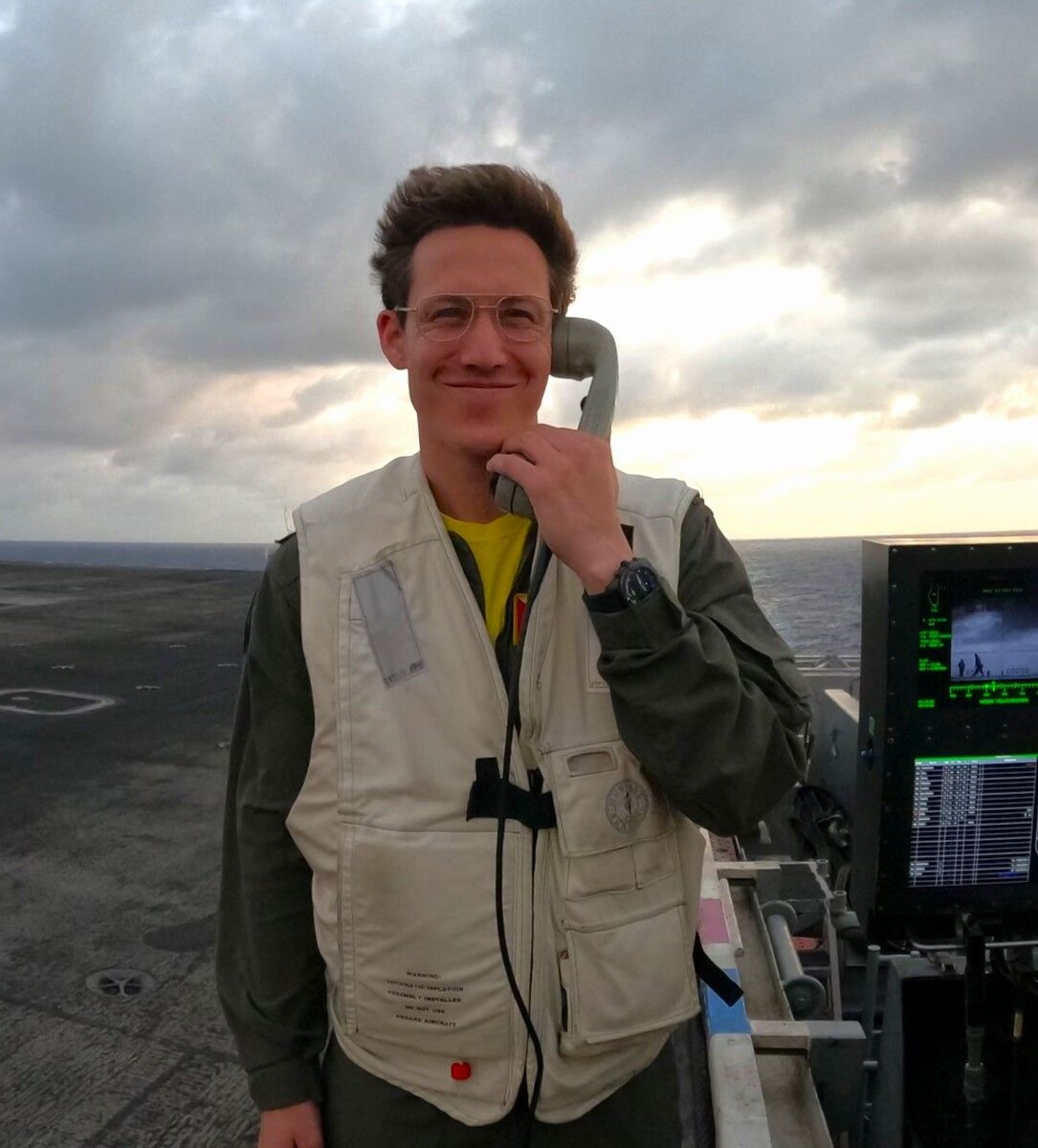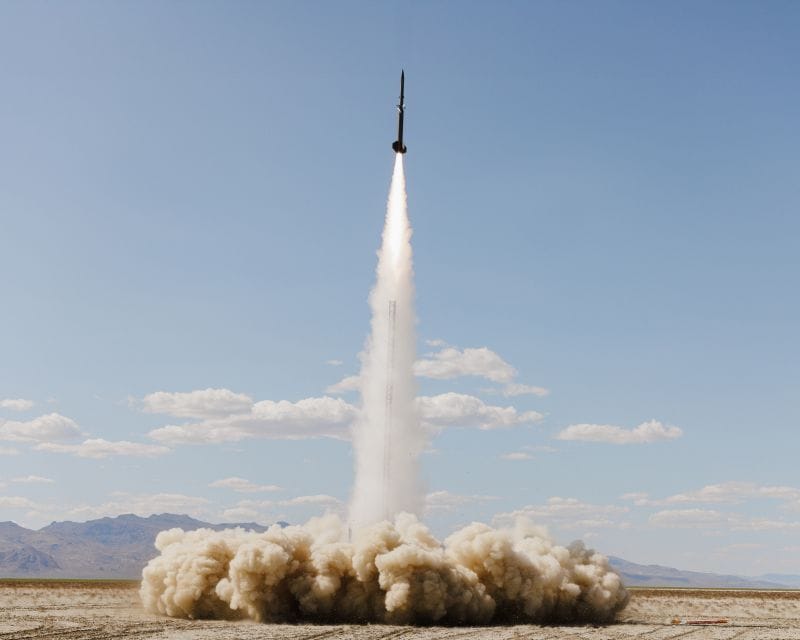Editor’s Brief1
Last week, we released our first interview with Chimney Trail Health CEO Matt Brown. If you have thoughts on the format, let us know. We’re experimenting with new formats to deliver the strongest product possible.
We first covered Castelion in March, before their STRATFI selection and HQ expansion. Since then, both the company and this newsletter’s audience have grown. This week’s update covers their trajectory for those tracking scalable hypersonic deterrence.
As always, your feedback shapes our coverage—reply directly with insights or questions.

Market intelligence for this issue was leveraged from data organized on Pryzm, a defense market intelligence platform and CRM.
Signal Brief: Castelion - Scaling Hypersonic Deterrence Through Strength
Castelion is taking a fundamentally different approach to defense manufacturing: build advanced hypersonic weapons using commercial aerospace practices to enable speed, affordability, and scale. Their goal is to close a growing gap in U.S. deterrence as China expands its first strike capabilities with a potentially global reach.
Origins & Vision
Founded in November 2022 by SpaceX alumni Bryon Hargis, Sean Pitt, and Andrew Kreitz, Castelion is applying commercial aerospace practices to defense manufacturing. Their vision is to field long-range precision strike systems fast enough, and in large enough numbers to shape outcomes.
Within months of launching, Castelion secured a Direct-to-Phase II SBIR from the AFRL and began component testing. In March 2024—just 16 months after founding—they completed their first flight test of a prototype hypersonic missile in the Mojave Desert.
By vertically integrating critical subsystems (solid rocket motors, missile avionics, thermal protection materials, and guidance systems), shrinking timelines from years to months without compromising mission requirements.
Key Takeaways
Commercial Speed in Defense: 16 months from founding to flight test
Strategic Cost Imposition: Hypersonics at scale force adversaries into expensive counter-strategies
Cross-Service Adoption: Work with the Army, Navy, and Air Force show platform flexibility
Investment Signal: $100M funding round in January 2025 provides a strong runway
Tech Radar: Castelion’s Strike Architecture
Hypersonic Strike Weapon – Affordability Through Modern Manufacturing
Castelion’s core platform is a long-range, Mach 5+ strike weapon designed to integrate across U.S. service branches. While operational deployment hasn’t been confirmed publicly, their high-cadence testing program is positioning them to move quickly from concept to fielding.
Key Capabilities
End-to-End Strike Package – Missile, launcher, and datalink
Platform-Agnostic Design – Cross-service compatibility
High-Cadence Testing – Rapid iteration pipeline
Precision, non-nuclear stand-off strike at scale
Market & Career Signals
Funding and Growth
Total Funding: $114.2M across Seed, Series A, and Venture Debt
Latest Round: $70M Series A & $30M Venture Debt (Jan 2025)
Notable Investors: Lightspeed Venture Partners, a16z, Lavrock Ventures, Cantos, First In, BlueYard Capital, and Interlagos. Venture Debt from SVB.
Valuation: Undisclosed
Annual Contract Value: Undisclosed
In April of 2025, Castelion moved into a 90,000 ft2 headquarters in Torrance, California.
Contracts & Government Traction2
Castelion has secured multiple contracts from across the Department of Defense, including:
Army SBIR Phase II (MAR ‘25) – Up to ~$1.8M for “Hypersonic Equipage from Twenty-Foot Equivalent Unit Container”
AFWERX STRATFI Selection (Mar ‘25)– Between $3 million and $15 million per project to scale innovations for operational use.
Air Force SBIR Phase II – ~$1.8M for "Low-Cost Highly Manufacturable Long-Range Strike Weapon" research
Air Force SBIR Phase III – $15.75M follow-on for scalable strike weapon production
Office of Naval Research – $3.0M R&D contract for hypersonic technologies
A broader look at Department of Defense hypersonics funding shows a surge over the past five years, with total investment climbing from under $2B in FY2019 to nearly $10B in FY2024. While funding is projected to decline to approximately $8.8B in FY2025, the Future Years Defense Program (FYDP) still allocates over $33B toward hypersonic weapons development and procurement. This reflects a sustained commitment to advancing long-range strike capabilities across the services. Castelion’s early traction positions it well within this broader funding environment, especially as the Pentagon shifts from R&D to deployment.
Looking Ahead
China’s hypersonic arsenal—most notably the DF-17 (~2,500 km range) and the DF-27 (estimated 5,000–8,000 km)—increasingly threatens U.S. forces across the Pacific. These missiles, deployed via hundreds of road-mobile launchers, give the PLA Rocket Force a credible first-strike capability that can hold Carrier Strike Groups, Guam, and even Hawaii at risk, while remaining hard to track and expensive to neutralize.3
The U.S. response has taken two forms: dream big, and build slow.
The “Golden Dome for America,” backed by Lockheed Martin and championed by the current administration, has projected costs between $175B and $500B and faces steep technical hurdles. The project draws inspiration from Israel’s Iron Dome and includes a space-based architecture of hundreds of satellites but becomes increasingly more complex at continental scale.
Meanwhile, near-term hypersonic programs continue to stumble. The Army’s Long-Range Hypersonic Weapon and the Navy’s Conventional Prompt Strike have seen repeated delays. In April 2025, the Navy canceled HALO—the Hypersonic Air-Launched Offensive missile—citing cost concerns.
Cold War deterrence relied on symmetry, rational actors, and decision timing underwritten by the logic of Mutually Assured Destruction. Today, the narrative is dominated by FPV drones and inside border attacks
But long-range, high-speed strike and the ability to credibly intercept it, remains central to strategic stability.
As Castelion CEO Bryon Hargis put it on the Valley of Death podcast:
You don’t get bonus points for extra killing the target. It’s either disabled or not
To transform deterrence, Castelion must continue to deliver on high-cadence testing and make the jump to full rate production, fielding thousands of missiles, instead of dozens. Unlike the Cold War, where accuracy and assured retaliation defined strategy, today’s competition with China should place as much emphasis on magazine depth as we do on accuracy.
Challenges:
Manufacturing Scale-Up – Transitioning from R&D to reliable mass production
Technology Maturation – Full-flight integration under operational conditions
Incumbent Competition – Breaking through entrenched acquisition pipelines
Contract Transition – Bridging the Valley of Death from early contracts to volume procurement
Bottom Line:
The next 18–24 months will define whether Castelion becomes a cornerstone of U.S. deterrence or just another promising prototype that never scaled.
If they can transition from testing to full-rate production, forge a role in programs like the AIM-174B, and forward-deploy systems to Pacific theaters, this would send a clear signal: the U.S. can respond to China’s mobile hypersonic arsenal with volume, speed, and credible reach.
Firepower alone isn’t going to ensure stability in the current Gray Zone. Deterrence is a balance of weapons, diplomacy, and credibility. The U.S. must pair offensive acceleration with layered defense and strategic signaling before timelines slip beyond relevance.
Stay Ahead of Defense Innovation
Not because it’s content.
But because the future’s being built. And you want a seat at the table.
1 The views expressed in this newsletter are my own and do not represent the views of the U.S. Navy, Department of Defense, or any government agency. Mention of companies, technologies, or products is not an endorsement or recommendation. The content is for informational purposes only and should not be considered investment advice.
2 These insights are based on data organized on Pryzm, a defense market intelligence platform and CRM.
3 All references to Chinese missile capabilities are based exclusively on open-source data from publicly available government reports, think tank analyses, and defense media. While capabilities are often understated rather than overstated in public discourse, this article does not draw on any classified information—regardless of any prior or current access we may or may not have.

